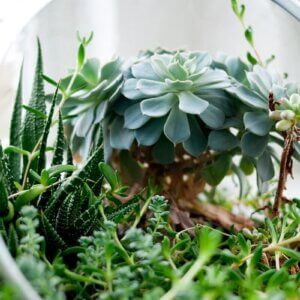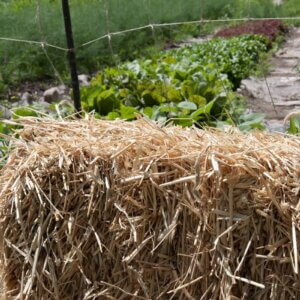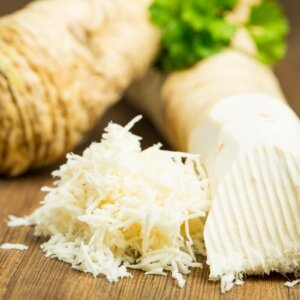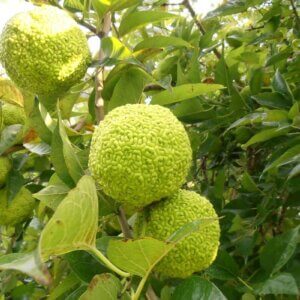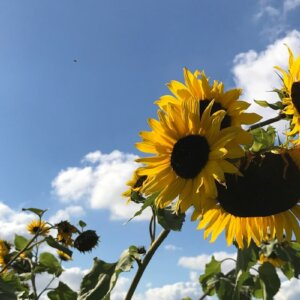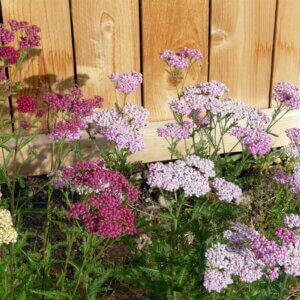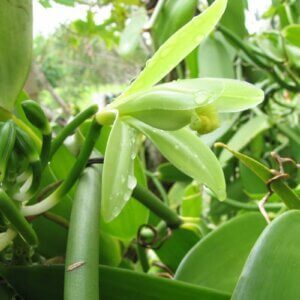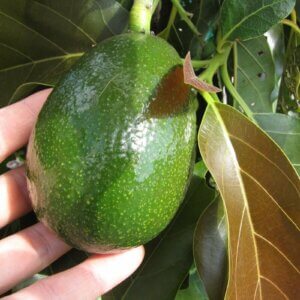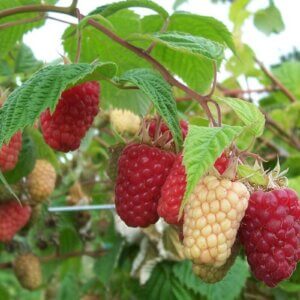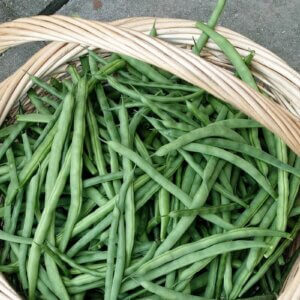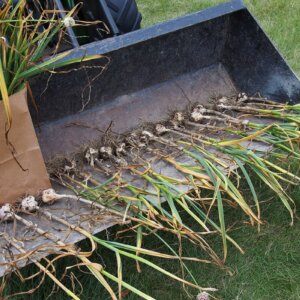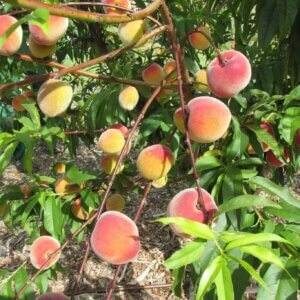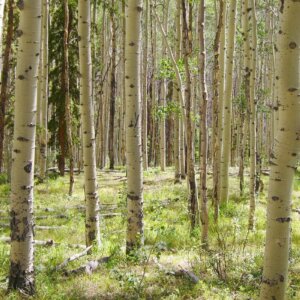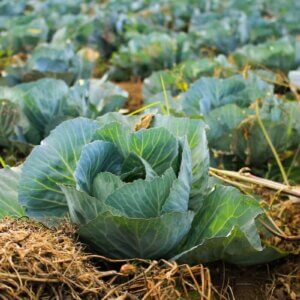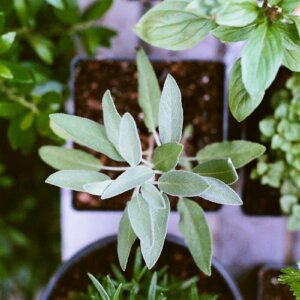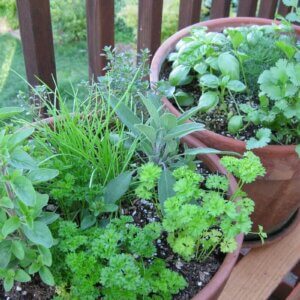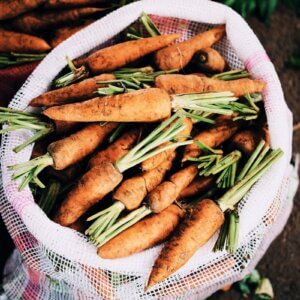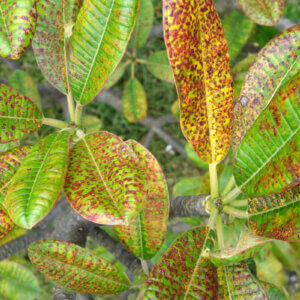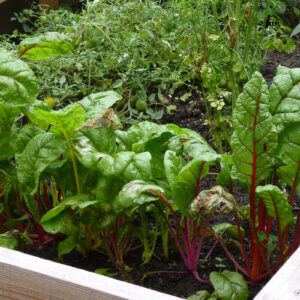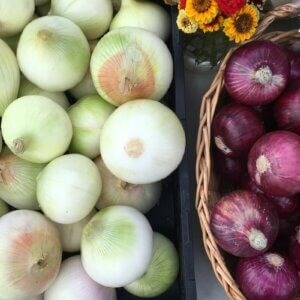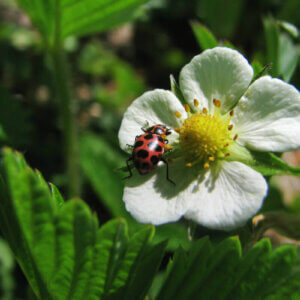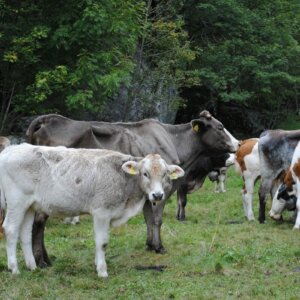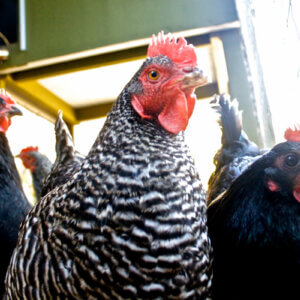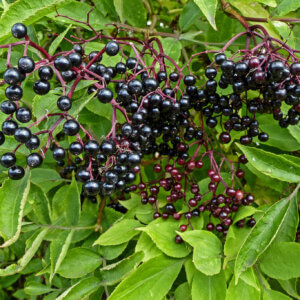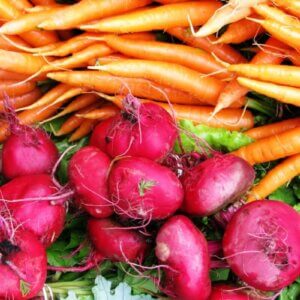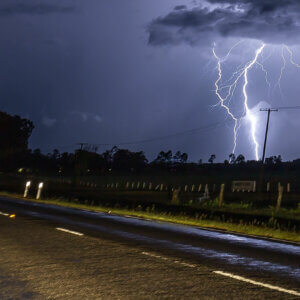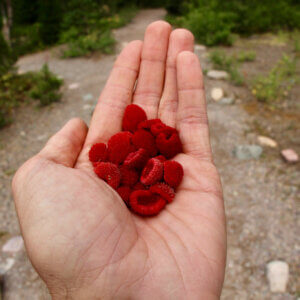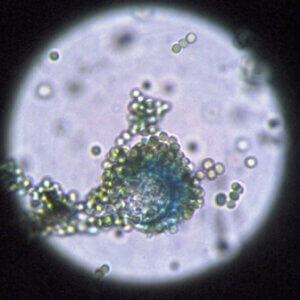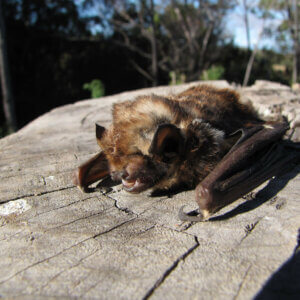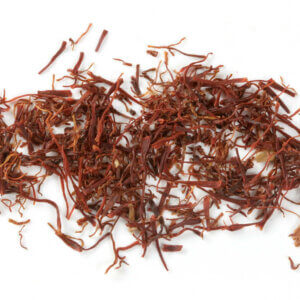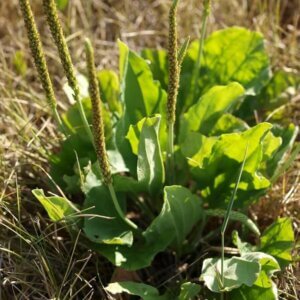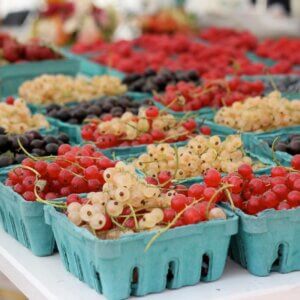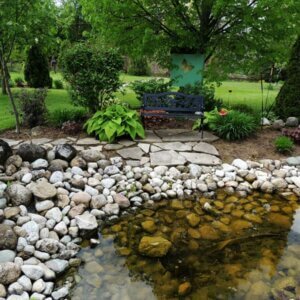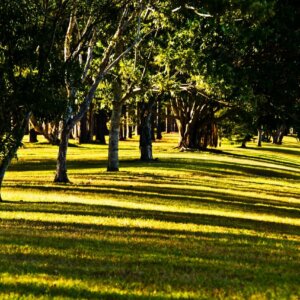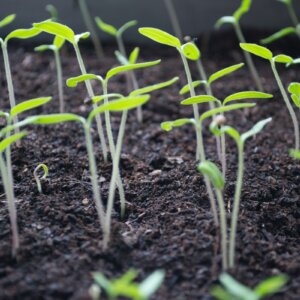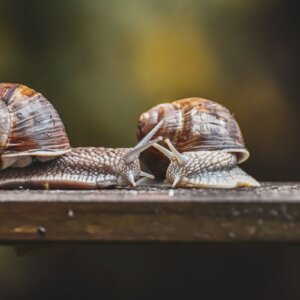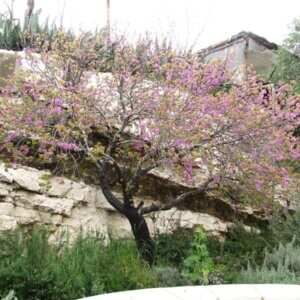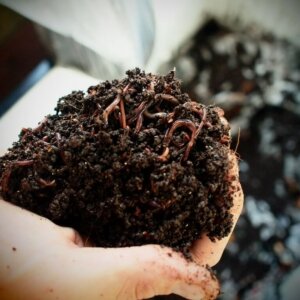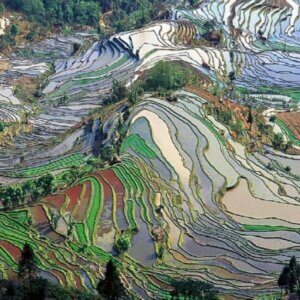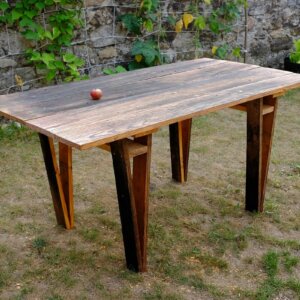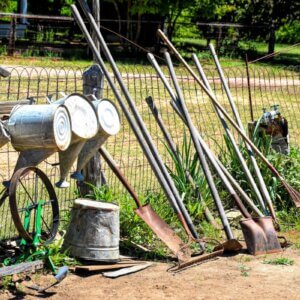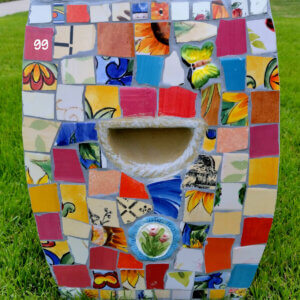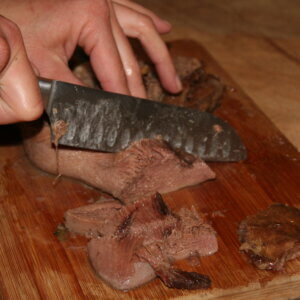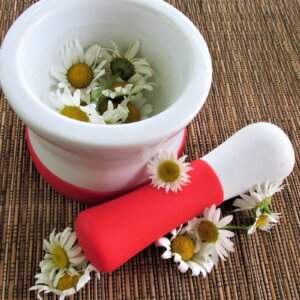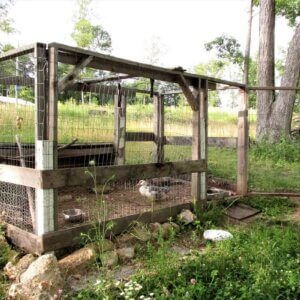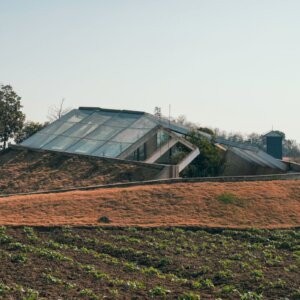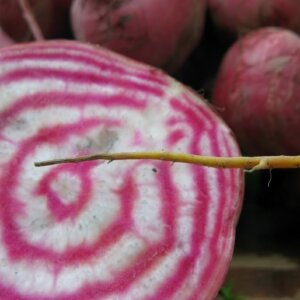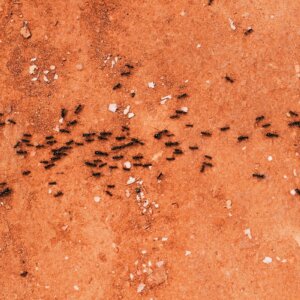Duck eggs, a favored delicacy in China, Malaysia, Vietnam, and the Philippines are quickly gaining popularity in the United States. If you’ve never tried them, duck eggs are richer, contain larger yolks, and (due to their thicker shell) stay fresh longer than chicken eggs. Not only are duck eggs considerably larger than chicken eggs, but
7 Of The Easiest Vegetables To Grow
Do you wish to practice self-sufficiency and grow and preserve your own vegetables — but are concerned that you have little time to tend a garden? No worries! There are lots of easy-to-grow vegetables that won’t take too much time and effort to grow successfully. Many homesteaders new to vegetable gardening are intimidated by the
19 Eye-Catching Terrarium Plants For Your Miniature Garden
A terrarium garden is much like an aquarium, but a habitat for plants rather than aquatic life. A terrarium can be constructed in a diverse array of glass containers. When planted, it should look like a miniature forest or fairy garden; its own unique little world. Terrariums are fun to craft for home decor or
The Basics Of Straw Bale Gardening
An ancient gardening technique dating back to the Romans, straw bale gardening is a simple concept. As a straw bale starts to decompose or break down, it turns into a raised, compostable, 40-gallon planter that’s ideal for growing vegetables. Straw bale gardens are inexpensive, easy to set up, easy to maintain, and biodegradable. Straw bale
Growing Horseradish In The Homestead Garden
Horseradish, a member of the mustard family and a close cousin of both cauliflower and the common radish, deserves a place in the homestead garden. Cultivated for its thick, creamy white or yellowish roots, horseradish derives its heat from isothiocyanate, a unique volatile compound oxidized when exposed to air and saliva. The spicy taste, pungent
Osage Orange Trees: Durable Hardwood With Alien-Like Fruit
Grown for decades by farmers and gardeners across the mid-western United States, Osage orange trees are incredibly versatile and can serve all sorts of purposes on the homestead. The wood from the Osage tree has been used to make tool handles, fence posts, livestock stockades, and furniture with a stable, durable wood that can withstand
How To Grow Sunflowers
I love sunflowers. Sunflowers display a bright splash of cheerful color against the garden fence, they provide an abundant crop of seeds which both our family and the birds enjoy, and they are so easy to grow. It doesn’t matter if you have a green thumb or not. If you can stick a seed in
How To Grow The Yarrow Plant
Native to temperate regions of the Northern Hemisphere, the yarrow plant is a hardy herbaceous perennial that’s a member of the Asteraceae plant family. Also known as old man’s pepper, common yarrow, nosebleed plant, or soldier’s woundwort, the erect, flowering plant is considered by many to be an invasive weed. Many homesteaders, though, appreciate the
How to Plant, Grow, and Harvest Yacon Root
With a sweet taste and crisp texture similar to apple, yacon (Smallanthus sonchifolius) is a flavor-packed root vegetable that’s quickly gaining popularity with homestead gardeners. Yacon is a tasty treat to put away for winter. Yacon tubers are stored the same way as any other root vegetable and can be dehydrated, pickled, or canned. Dried
Eco-Friendly DIY Drain Cleaners
Why is it a slow or clogged drain always seems to occur at the worst possible moment? You’re busy preparing a dinner party, company is soon to arrive, and now you find the water in the guest bathroom sink doesn’t want to drain. What to do? You want something that will clear your plumbing problems
How to Grow the Vanilla Plant
Don’t you just love the fragrance and flavor of vanilla? Most folks do. In fact, the United States is the second largest consumer of vanilla per capita worldwide. While much of the world’s vanilla extract is synthetic, gourmet chefs and foodies alike know there is nothing like the flavor of pure, natural vanilla to add
How to Grow an Avocado Plant
Avocados have long been considered a perfect food. If the avocado were newly discovered today, it would be marketed as a miracle food. Irresistibly flavorful with a smooth, creamy texture, avocados should be part of everyone’s daily diet. Indigenous to Mexico and Central America, avocado trees thrive in sub-tropical and tropical climates around the world.
Growing Raspberries
Across the country, market demand for raspberries far exceeds availability and provides an ideal opportunity for homesteaders to cultivate the fruit for local markets as well as home use. A berry patch of an acre or less can provide a significant cash crop with little expense for equipment or supplies. Brambleberry production is ideally suited
Canning Green Beans
To reduce our reliance on commercially grown produce, we grow as much of our own food as possible and preserve it for the offseason. Preserving fruits and vegetables is a centuries-old homesteading tradition. Growing up on my grandparents’ farm, I have fond memories of rows of pantry shelves packed full of colorful jars of syrup,
How to Store Garlic
A staple in homestead gardens, garlic is easy to plant, easy to maintain, easy to harvest, and transports and stores well. With a little effort, homesteaders can grow garlic for home consumption and a supplemental cash crop. Garlic: fresh, pickled, dehydrated, packed in olive oil, or used to season savory edibles, is always a big
Dwarf Fruit Trees
When landscape professionals talk about dwarf trees, they refer to trees both deciduous and evergreen that are explicitly cultivated to remain small and manageable. If space is limited, dwarf fruit trees are the ideal solution for both visual impact and fruit production in small gardens. Dwarf fruit trees are generally short trees with broad canopies
12 Ingenious Everyday Borax Uses
Inexpensive and readily available, powdered borax, also known as sodium tetraborate, is a naturally occurring common boron mineral salt. Borax is a component in a diverse array of laundry soaps, bath salts, hand soaps, cleaning products, and cosmetics. It’s a product homesteaders have used for more than 100 years. First discovered in dry lakebeds of
Fast Growing Shade Trees For Your Homestead
It always seems like you don’t realize the lack of shade in your backyard until it’s too late. You’ve already settled on a good book, put out the lawn chair, and made yourself a nice lunch when you discover that the heat of the sun is simply too much. While you could settle on a
Growing Cabbage
Cabbage, a dietary staple in cultures around the world, is a hardy, green leaf vegetable packed full of vitamins. Although it establishes itself easily, cabbage can be somewhat challenging to grow. A magnet for many garden pests, cabbage requires cool temperatures, fertile soil, excellent drainage, and plenty of moisture. Plant Description A member of the
All About Sage
Experienced homesteaders suggest that if you want to attract birds, bees, butterflies, and wildlife to your rural homestead, plant and grow sage. Sage is a favorite in homestead herb gardens because it is one of the easiest plants to grow. A member of 200 genera and more than 3,200 species of the plant family Lamiaceae,
Herb Gardening 101
Planning and planting an organic herb garden is a traditional part of the homestead lifestyle goal of self-sufficiency. Growing rare and beautiful culinary and medicinal herbs is a glorious gardening experience. Herbs offer brilliant flowers, delightful fragrance, eye-catching foliage, and they are one of the easiest types of plants to grow. Think of the herbs
7 Ways To Mouse-Proof Your Homestead
For homesteaders, the common house mouse is one of the most troublesome of pests. A small brown or gray rodent with little beady eyes, large ears, and a skinny three to four-inch long tail, house mice flourish under a diverse array of conditions in and around homes, sheds, barns, and outbuildings. The unwelcome intruders consume
All About Organic Skincare
Organic and natural products are coming out of the shadow of mainstream beauty preparations, demonstrating likely and proven restorative results. Both women and men are more frequently choosing not to apply products with chemicals and possible noxious toxins that may irritate or damage delicate skin. Instead, they are opting to only use pure organic/natural preparations.
Growing Broom Corn
If you’re getting through the long, dark days of winter reading the seed catalogs and dreaming of having your hands in the dirt, you may want to consider adding some new and visually exciting plants to your homestead landscape. Broom corn fits the bill. Native to Central Africa, broom corn, (Sorghum vulgare) a variety of
Growing Carrots
Carrots are an easy-to-grow, easy-to-store root crop. Valued for more than a thousand years, the humble carrot gives color, texture, substance, flavor, and life to a diverse array of dishes. Serve grated to complement salads and sandwiches or chopped to add tone and substance to soups, stews, and casseroles. Sliced, steamed carrots, glazed with butter
Pet Waste Management Tips For Homesteaders
Many rural homesteaders faced with a continual problem of dealing with pet waste, ask “can pet poo be composted?” The answer is a resounding yes. Dog poop can be easily composted in a backyard composter bin containing red worms where it is readily converted into rich compost. Composting pet waste prevents these materials from reaching
Amazing Health Benefits Of Eating Fish
Packed full of high-quality protein and low in saturated fats, fresh fish is an exceptional source of omega-3 fatty acids and essential vitamins and minerals including vitamin D, B2, calcium, zinc, iron, magnesium, potassium, and iodine. Extensive medical research studies support the American Heart Association’s recommendation of eating fish twice per week as part of
Geckos In The Garden
Do geckos call your homestead home? Household geckos are said to bring harmony, good luck, and good fortune to the household. Killing a gecko invokes an unhappy chain of bad luck events of long duration. If you have geckos in your garden, celebrate their presence but try not to invite them indoors. A small to
What To Do When Plant Disease Attacks Your Garden
No matter if it is viral, fungal, or bacterial, plant disease can enter your garden in a diverse array of ways. Many plant diseases are difficult to identify or to even to determine if what is attacking your plants is, in fact, a disease. Symptoms appear similar from bacterial to viral to fungal. Even insects
5 Ways To Prevent Plant Disease
Any experienced gardener will tell you that when it comes to plant diseases, regardless of how much you weed, water, and worry, certain problems are beyond your control. There are, however, several things you can do to prevent or lessen the chance of plant disease in your garden. 1. Make Sure You’re Planting In The
11 Steps To Make Your New Year’s Resolutions Stick
Face it, everyone is doing it. We feel compelled to join in the tradition of taking a good hard look at our lives, evaluating our faults and flaws, and making resolutions to start anew. We promise this will be the year we finally lose weight, get more exercise, quit smoking, and manage to drink less
14 Things You Didn’t Know About Onions
We’re all familiar with onions, but with this tasty vegetable, there’s more than meets the eye. Read on to learn more facts about onions that you probably didn’t know! 1. Onions Played A Surprising Role In The Olympics In the first century, the Greek physician Dioscorides advocated a diverse array of medicinal uses of onions.
Attracting Ladybugs To The Homestead Garden
Organic gardeners know that when ladybugs are abundant in the springtime, they can anticipate a bountiful harvest. Fortunate is the homestead blessed with an abundance of ladybugs. Ladybugs are guests you want to invite and keep in your garden. Read on to learn a bit about these beneficial insects, how to properly identify them, and
5 Questions To Ask Yourself Before You Become A Homesteader
Are you tired of traffic jams and the fast pace of city living? Do you long to escape the rush and retreat to the quiet of rural living? If so, you are not alone. Each year, more and more people chose to leave the cultural amenities and conveniences of urban life to embrace a simple,
Homesteader Tips For Dealing With Parasites
How healthy is your homestead? When evaluating the health of your homestead, it is important to look at the whole picture. The condition of the soil, the health of the plants on your property, the water quality, as well as the immunity level and overall health of people, pets and livestock. If a problem is
Growing Roses
Roses are popular and beautiful flowering shrubs in many homestead gardens. However, starting a rose garden can seem like a bit of an intimidating challenge for new gardeners. It isn’t as hard as you might think. In fact, with planning and proper planting, most anyone can cultivate a successful rose garden. There is no argument
Homestead Fire Prevention
Many people fail to realize that they face serious wildfire danger. However, if you live in the rural prairies, foothills, or mountainous regions of North America, you are at risk. Fire is frightening, unpredictable, and life-threatening. Weakness in your homestead’s fire protection scheme can create opportunities for a fire to take control, often because of
Growing Elderberries
A member of the honeysuckle family, the common elderberry (Sambucus nigra subsp. canadensis), also known as American elder, wild elder, sweet elder, dwarf elder, hairy blue elderflower, European elder or Tree of Music, is a dense, woody shrub. It grows wild across the northern reaches of the United States and in the southern provinces of
How To Make Carrot Wine
As a young man, my father was a homesteader who raised root vegetables to sell at the town fresh market. Even when the harvest was plentiful, there were always misshapen carrots, not attractive enough to appeal to what he called “picky city folk.” Dad stashed most of the rejects in the root cellar, to make
Disaster Preparedness For Homesteaders
Emergencies, by their very definition, are stressful. I, like many homesteaders, find myself concerned about the possibility of an emergency event such as a natural disaster, a disease outbreak, or an act of terrorism. Do you too, wonder if you have done all you can to help prepare for a catastrophic survival situation? Panic and
Cultivating Thimbleberries In The Homestead Garden
Thimbleberry (Rubus parviflorus Nutt.) is a common bramble plant found growing in the wild on sunny, sub-alpine, mountainous slopes and avalanche tracks from Alaska to California. In fact, thimbleberries are a circumpolar fruit that grows wild in Japan and Russia, and all but the most southern regions of North America. Red when ripe, thimbleberries may
Household Mold Removal
Gross, slimy, smelly, and dangerous to people and pets, mold is the last thing you want to see growing in your home. Mold won’t necessarily destroy your homestead, but it can make family members and pets sick while it makes your home, barns, outbuildings, chicken coop, root cellar, livestock pens, and pump house look awful
Frugal Homesteading Tips For Stretching The Family Food Budget
Many Americans experience the tight squeeze of tough economic times. In many parts of the nation, unemployment statistics may unexpectedly soar to an all-time high. When this happens, jobs are hard to find. If you are in a situation where you need to cut back on living expenses to stretch your budget, reducing the amount
Bats Benefit The Environment—And Your Homestead
Worldwide, bats receive an undeserved bad rep. If asked, most people worldwide will say they don’t like bats. Bats smell bad, they’re creepy, dangerous, and are typically portrayed as scary in numerous horror films. The majority of folks questioned would likely tell you that bats are “flying rats” that carry disease. Simply put, they are
Rodent Control Without Poison
As the weather starts to cool, rodents such as mice, rats, chipmunks, and squirrels attempt to find a warm place to stay well fed during the cold winter months. While these rodent pests are small, they can cause huge problems for homesteaders. Rodents contaminate food and indoor surfaces with salmonella and a diverse array of
Growing Saffron Crocus Bulbs
Known around the globe as a spice worth more than its weight in gold, saffron is expensive, but the intense color and incredible flavor it brings to food is priceless. A single grain of pure saffron will add distinctive bright yellow color to 10 gallons of water, or embellish the flavor of 10 pounds of
Plantain Weed
Learning about Mother Nature’s edible and healing plants is a critical component of living a sustainable, self-sufficient, and prepared lifestyle. Broadleaf Plantain, commonly pronounced plan-tin, is a “common” weed that most folks recognize. You likely see it in your lawn, but chances are you don’t know its name. However, there is nothing common about Broadleaf
Planting Currant Bushes
Currants are a great addition to any homestead. Native to the United States, currants are a flavorful and versatile berry used in jellies, jams, wine, cordials, puddings, and pies. Currants, no matter whether they are black, red, pink, or white, establish readily in the homestead garden where they will provide an annual abundance of sweet
Rock Garden: How To Build Your Own
Does your homestead landscape have some empty space that could become a rock garden? Also known as a rockery, a rock garden adds dramatic year-round visual interest to any landscape while expanding the type of plants you can grow. Related Post: The Art Of The Dry Stack Stone Wall A rock garden, glowing with brightly
How To Make Money Growing Trees
Planting trees can help the environment, and your wallet. Agro-farming methods incorporate trees into the homestead landscape. In turn, the trees provide food and shelter for wildlife, and help control erosion. Additionally, the methods serve as a windbreak and offer shade and shelter to people, plants, and animals. From a homesteading standpoint, agro-farming helps to



